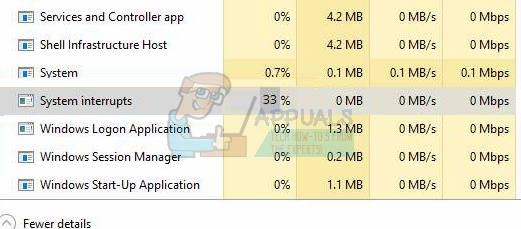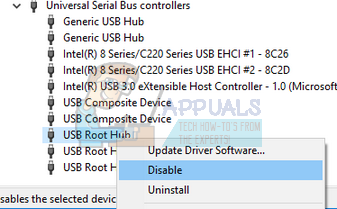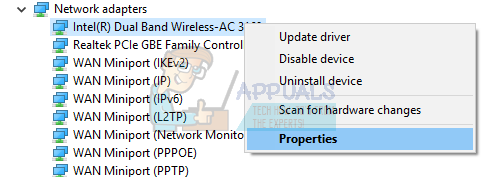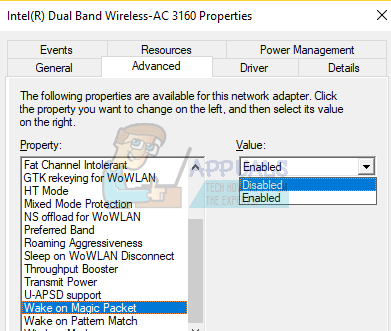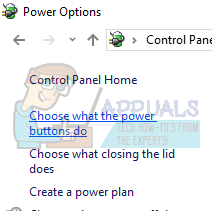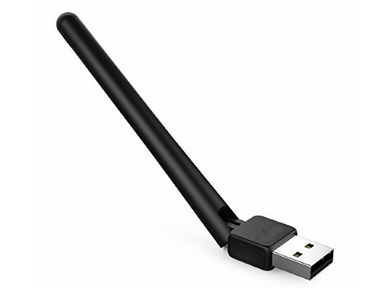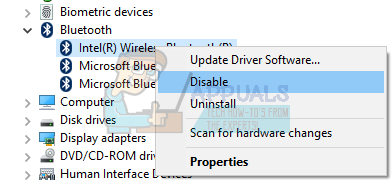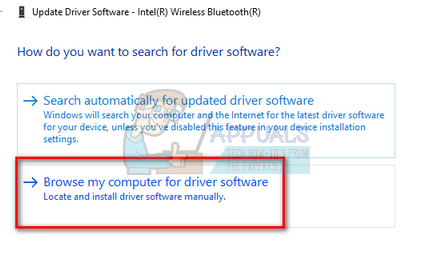Hardware interrupts are a core part of any computer and they are used to effectively manage and run many activities simultaneously. There are hundreds of processes executing simultaneously on your computer. Interrupts are used as a mechanism to execute an important instruction right away by suspending the activity of some other processes or they are used by processes to alert the CPU that they are ready for execution.
Although its important use in the operating system and on your machine, the process System Interrupts shouldn’t go beyond 2-3% in any normal conditions. If the process jumps to around 20% and stays there, it means you have a problem. These problems can be traced back to badly configured drivers, some external devices, and fast boot etc. We have listed down a number of different workarounds to solve this case. Start with the first one and work your way down as the complexity also increases.
Solution 1: Disabling USB Root Hubs
The USB Root Hub is not a physical device that you plug in a USB peripheral. It is instead a software driver that lets you connect multiple USB peripherals to your computer. Most computers have multiple USB root hubs so you can share the data bus across multiple devices. In order to disable the USB root hubs not in use by your keyboard and mouse, we have to first determine which USB root hubs are they using. First, we will determine this and then disable all the extra root hubs in hopes this will fix the high CPU usage.
Solution 2: Disabling Audio Enhancements
Some sound drivers use enhancements in an attempt to improve your sound quality. If these properties are not compatible with your computer, this can result in some major problems like the CPU usage we are just experiencing. We can try disabling the audio enhancements and check if the CPU usage gets better. Not all sound drivers perform this function. They may have the Enhancements tab renamed as sound blaster. In that case, we can try disabling all the effects to the audio. Some sound drivers also have an issue with the “Exclusive mode” option which allows other applications to take full control of your sound card. This shouldn’t be a problem but it is worth a try to see if this fixed our problem.
Note: If this doesn’t bring any change you can always turn all these options back on.
Solution 3: Disabling the Wake on Magic Packet Settings
There is a feature on Windows where your network adapter has the privilege to wake up your PC upon transmission of data. The computer refers to the data packet as “Wake on Magic Packet”. This feature is also known to cause high CPU usage issues as it seems that a lot of interrupts are generated and the system corresponds to each of them. We can try disabling this option from your Settings. If this doesn’t produce any expected results, you can always disable it later on.
Restart your computer if needed and check if the problem got fixed.
Solution 4: Installing Intel Rapid Storage Technology
Intel Rapid Storage Technology is a Windows-based application that provides improved performance and reliability for systems equipped with SATA disks for desktop, mobile, and server platforms. When using one or multiple SATA disk drives, you can take advantage of enhanced performance and lower power consumption. When using more than one disk, you can increase protection against data loss in the event of disk failure. There were a few instances where users observed that installing the Intel Rapid Storage Technology module solved their problem for them. Installation isn’t much of a hassle but you should be aware that it replaces the SATA controller driver on your computer. If you are well aware of the mechanics, go ahead and install the module from Intel’s official website. If the product is installed successfully, you should see an icon in your taskbar which looks something like this.
Solution 5: Turning off Fast Startup
Windows 10’s Fast Startup (also called fast boot) works similarly to the hybrid sleep modes of previous versions of windows. It combines the elements of a cold shutdown and the hibernate feature. When you shut down your computer, Windows logs off all users and closes all applications similar to the cold boot. At this point, Window’s state is similar to when it is freshly booted up (as all users are logged off and applications are closed). However, the system session is running and the kernel is already loaded up. Then Windows sends a notification to device drivers to prepare for hibernation and saves the current system state to hibernation and turns off the computer. When you restart the computer, Windows doesn’t have to reload the kernel, system state or the drivers. It just refreshes your RAM with the loaded image in the hibernation file and navigates you to the startup screen. We can try disabling this feature as it doesn’t completely shut down your computer in the traditional way we expect. There were numerous people who found that disabling this feature solved the high CPU instantly.
Solution 6: Troubleshooting Devices and Drivers
If you have gone through all the solutions listed above with no results, we have no choice but to start diagnosing which device/driver is causing the problem. System interrupts are mostly driven by bad drivers or device with only a few software exceptions (which we just covered above). We will start by disconnection all your External devices and then move on to your Internal devices. We will also update the device drivers in each instance.
Press Windows + R, type “devmgmt.msc” and press Enter. Once in the device manager, target devices like network adapters, sound cards, and other add-on cards etc. After disabling each device, check the CPU usage by system interrupts. If it doesn’t change and is still stable at 20-30%, it means the device you disabled isn’t the culprit and you have to move on to the next.
Avoid disabling important system devices such as disk drives, display adapters, anything under computer, processor, or system device categories. You have to download the required drivers from your manufacturer’s website.
Right-click on the device and click “Update device driver”. Now select the second option “Browse my computer for driver software”.
Fix: Deferred Procedure Calls and Interrupts Service Routines High CPU and Disk…Fix: High System and CPU Usage by MpCmdRun.exeFix: High CPU Usage by Service Host: Local System (Network Restricted)Fix: System Idle Process High CPU Usage
